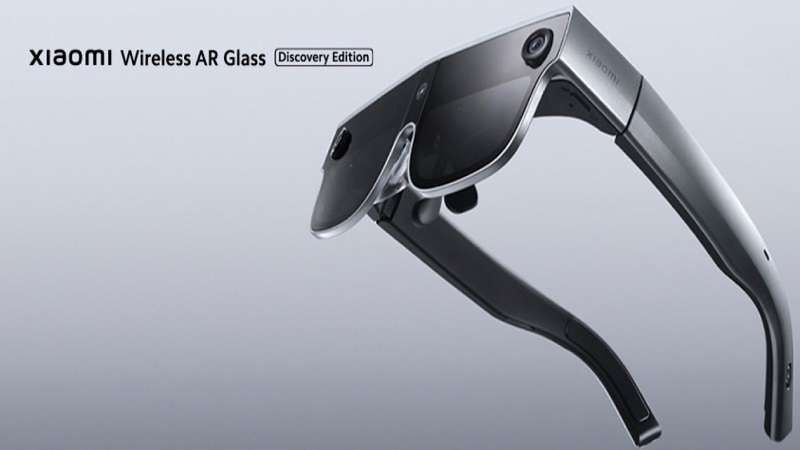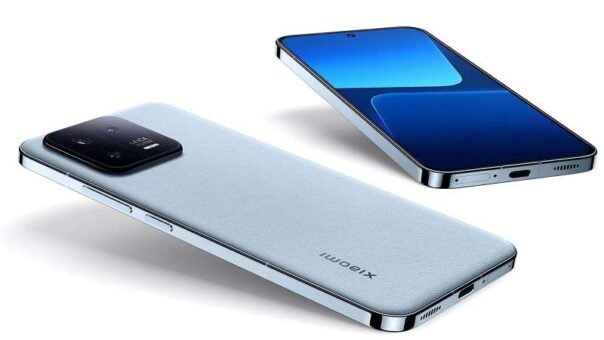Xiaomi has launched Redmi 12C with 50MP main camera for capturing clear photos with greater details in everyday scenes.
(more…)Tag: Xiaomi
-

Xiaomi launches Wireless AR Glass with retina-level adaptive display
Xiaomi has launched its Wireless AR Glasses featuring with retina-level adaptive display that adjusts to the lighting environment.
(more…) -

Xiaomi 13 Series with triple camera setup launched
Xiaomi launched its latest flagship smartphone lineup – Xiaomi 13 Series with triple camera setup co-engineered with Leica.
(more…) -

Xiaomi unveils Electric scooter and other electric gadgets
Xiaomi unveils its latest suite of AIoT products at the highly anticipated global product launch event in Barcelona.
(more…) -

Price, specs of Xiaomi 12 in Pakistan
Xiaomi 12 was released in Pakistan on January 30, 2022. The price of the phone with internal memory of 256GB and RAM of 12GB is Rs179,999.
(more…) -

Price, specs of Redmi Note 11 Pro in Pakistan
Xiaomi Redmi Note 11 Pro was released in Pakistan on February 10, 2022. The price of the phone varies according to storage capacity.
(more…) -

Expected price of Xiaomi Redmi 12C
Xiaomi Redmi 12C will be launching in Pakistan on January 10, 2023. The expected price of the phone as on January 8, 2023 is Rs44,999.
(more…) -

Expected price of Redmi K50 Ultra in Pakistan
Xiaomi Redmi K50 Ultra will be launched in Pakistan on January 01, 2023. The expected price of phone is Rs139,999.
(more…) -

Xiaomi launches Watch S2, many other products with exciting features
BEIJING: Xiaomi unveiled Xiaomi Watch S2 and many other products that contains exciting features.
Along with Xiaomi 13 and 13 Pro the other products are Xiaomi Watch S2, Xiaomi Buds 4, Xiaomi Sound Pro, Xiaomi Router 10000, and Xiaomi Mini PC.
Xiaomi Watch S2 brings a professional-grade sports tracking experience, offering ultra-comprehensive health monitoring and convenient features on the wrist. The watch comes in a more compact 42mm size, and is available in black, silver and light gold, as well as offering various options of colors for leather or silicone straps. For the first time, Xiaomi Watch S2 supports body composition measurement, which only takes a few seconds to measure and present eight types of body health data results. Xiaomi Watch S2’s new safety tracking feature, allows the users to send geolocation and SOS messages with a quick keystroke in case of any emergency.
Xiaomi Buds 4 offers an immersive audio experience with its powerful hardware and software capabilities. Equipped with Xiaomi’s customized graphene dual magnetic drivers and dynamic adaptive EQ compensation, the earbuds provide users a stable and consistent sound quality even while jogging.
Xiaomi Buds 4 is LHDC 5.0 and Hi-Res Audio Wireless certified, bringing astonishing audio in high-definition and with low-distortion. Xiaomi Buds 4’s case features a “space capsule” design, and earbuds can be snapped back into its place for easy storage. Its ergonomically half in-dear design enables users to have a secure fit and comfortable time for prolonged wearing. Furthermore, the adaptive active noise cancelling on Xiaomi Buds 4 enables a real-time adjustment for different levels of noise cancelling by recognizing ambient unwanted noise. With the new “independent spatial audio”, Xiaomi Buds 4 has on-device computing capabilities, meaning it no longer depends on smartphones for spatial audio calculations.
Xiaomi Sound Pro is equipped with 7 units of 55W and 360-degree omnidirectional sound, and features HARMAN AudioEFX professional tuning. The speaker is able to automatically adjust its output style among “Strong Bass”, “Balanced” and “Clean” modes by analyzing the content played when using XiaoAi Speaker app. In order to further enhance the connected smart home sound system experience
Xiaomi Sound Pro supports multiple connection methods such as Bluetooth 5.1, Aux in, and AirPlay 2. In addition, the intercom feature supports real-time communication between multiple speakers, as well as smartphones, TVs and other devices, so you can easily talk to your family without leaving the room.
Xiaomi Router 10000 features the highest configuration among our router offerings, and has an increased network speed by 20 per cent compared with the previous generation. The flagship tri-band router offers a wireless and wired data transfer rate of up to 10 Gigabit, ensuring sufficient bandwidth for next-generation usage such as VR games, 8K streaming media, and real-time high-definition conferences.
It is equipped with a Qualcomm quad-core A73 processor, 12-channel signal amplifier, 2GB storage, dual 10G network port, USB 3.0 port, as well as a sophisticated heat dissipation system, Xiaomi Router 10000 enables users to easily build a 10Gbps ultra-high-speed household WAN/LAN with NAS and supports simultaneous connection of more than 1,000 devices. The NFC pairing feature allows users to connect to the high-speed internet extremely easy and accessible.
READ MORE: Xiaomi unveils Xiaomi 13 and 13 Pro
Xiaomi Mini PC is the most compact mainstream performance desktop at only 0.444L and weighs 437g. It adopts the 12th generation Core i5-1240P processor featuring a 12-core 16-thread heterogeneous design with a maximum turbo frequency reaching 4.4GHz, while the integrated Intel Iris Xe graphics (80EUs) ensures excellent performance 24-7. On the storage front, it utilizes a 16GB DDR4 and 512GB PCle 4.0SSD, and supports expandable storage of up to 32GB RAM and 4TB SSD ROM. The large 4600RPM fan and a dual heat pipe heat dissipation system ensures a stable performance of Xiaomi Mini PC.
The device comes with Windows 11 pre-installed and supports Ubuntu, OpenWWRT, UNRAID, and EXSI operating systems. For maximum utility and connectivity, it also features a wide range of versatile ports capable of connecting to external graphics cards and hard drives when needed. With Bluetooth 5.3 and Wi-Fi 6 built-in support, Xiaomi Mini PC is a compact yet powerful device, covering users needs in all daily scenarios.
-

Xiaomi unveils Xiaomi 13 and 13 Pro
BEIJING: Xiaomi unveiled 13 Series in collaboration with Leica. The phones include Xiaomi 13 and 13 Pro.
The phone is available colors including white, black, flora green and mountain blue. It adopts a flat screen with matching flat edges for a clean and strong visual impact on the front.
Xiaomi 13 Series is equipped with 4nm flagship processors from Qualcomm, the Snapdragon® 8 Gen 2 mobile platform. The new 1+4+3 fusion CPU architecture brings 37 per cent performance improvements while reducing power consumption by 47 per cent.
The new Adreno GPU brings 42 per cent performance improvements while reducing power consumption by 49 per cent. In typical benchmark workloads, Snapdragon® 8 Gen 2 achieved almost 2x fps/watt.
READ MORE: Price, specs of iPhone 11 in Pakistan
Xiaomi 13 Pro also features double-curved ceramic body for uniform look that transitions smoothly especially into the camera module. It is available in four colors, Ceramic White, Ceramic Black, Flora Green (Ceramic) and Mountain Blue.
Xiaomi 13 implements a screen-to-body ratio to 93.3 per cent with a 6.36″ full-screen AMOLED display and 1.61mm ultra-thin bezels.
The displays of Xiaomi 13 and Xiaomi 13 Pro have excellent HDR capabilities, with a fullscreen brightness of up to 1,200nits and a peak brightness of up to 1,900nits for optimal viewing.
READ MORE: Xiaomi 12T and 12T Pro released with exciting features
Xiaomi 13 is equipped with 4,500mAh silicon-oxygen anode battery, with the highest energy density under the same power. It also supports 67W wired charging and 50W wireless charging.
Xiaomi 13 Pro is equipped with a 4,820mAh battery and supports 120W wired charging and 50W wireless charging.
